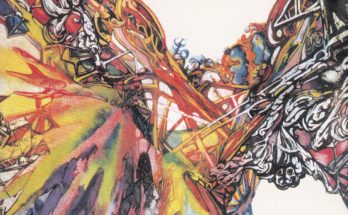By Rodrigo Díaz, Josemaría Moreno and Bernardo Moreno
They say that 2022 left us in the blink of an eye, leaving us with a feeling that time is moving faster and faster. Without going into esoteric polemics about nature, we would like to talk about the importance of cycles in general. A historical retrospective takes us from the Gregorian calendar, governed by solar rhythms, to the discovery of agriculture, and its influence on weather cycles. The great historian of religions, Mircea Eliade, the discovery of agriculture, be changed the destiny of humanity by ensuring food. But it also brought many new theories. “What he (humanity) understood by the example of the seeds that lose their shape under the earth, all of this constituted the decisive lesson. Agriculture revealed to man the fundamental unity of organic life. Rhythmic life, death as regression, etc., were essential syntheses for the evolution of the species, and that, without a doubt, were the muse in the creators of this triad of works that we put on the table.”
Aura, Carlos Fuentes, 1962
Aura is one of the most important novels in Mexican literature, by one of the most prominent writers the country had, and who only lacked the Nobel Prize among his recognitions. This novel was written in the second person singular, which makes for a narrow introspective, an almost magical feel. The story revolves around Felipe Montero, a young historian, who is hired by Doña Consuelo, widow of General Llorente, to finish writing the memoirs of her late husband. Montero is assisted by Consuelo’s niece Aura, who strangely replicates the old woman’s movements. Locked up in the old mansion in Mexico City, always in darkness, and with only the light of candles, Montero takes on the task of writing the memoirs, and in the process falls in love with Aura. The periods and the characters are mixed in an exquisite narration, full of communications in a gothic environment. Here he faces the desire to break the natural cycle of existence, and defeat death, hereby challenged in a pursuit of eternal youth. The story that will remain tattooed in the mind of the reader, after closing the book.
The Seasons of Life, Kim Ki-Duk 2003
This film is from one of the most important film directors of the South Korean avant-garde, still acclaimed today. Here are depicted the seasons of life, and the beautiful photography shows unforgettable landscape: a cabin floating on the lake, and the mountains in the background. Each season of the year is unmistakable and unique, giving us glimpses of beautiful scenes, filled with learning for both teacher and disciple. The script borders on poetry, with a judicious number of words and their choice. Through it we are shown the growth of a child with an old Buddhist monk, the teacher-disciple interaction. All of this leads us through innocence and cruelty, love and jealousy, repentance and punishment and, finally, death and condemnation. There is a mythical scene of the monk, with his eyes, nose, mouth and ears covered, who immolates himself on a raft adrift in the lake so that everything can start again. The cycle is completed, renewed, and a new opportunity is reborn. The disciple is the teacher of a child who left on the shore of the lake. The film is filled with symbolisms, human emotions, and framed by the rhythms of nature; a true work of art.
God Speed You! Black Emperor, Lift your Skinny Fists Like Antennas to Heaven, 2000
The third album by this Canadian band has been recognized as one of the 50 most powerful albums in history. The story of this gang is complex, with interrogations by the FBI on suspicion of being members of a terrorist organization. They are known to be politically anarchist. Their expression through music and album covers, could be called futurists in the vein of Marinetti in his wildest praise of movement, violence, independence, and revolution. The album in question consists of four long tracks, divided by «moments» or «cycles.» These go on to uninterruptedly shake your auditory perception through seemingly endless progressive riffs, as if an indelible force were recording guitar blasts on a blank vinyl. It is a bellicose work produced by the mild-mannered nation of Canada. The revolutions of this vinyl becomes incisive after each turn under the needle. What becomes apparent is that each cycle that ends is always wilder than the previous one, and each restart is more a task of reconstruction, and not renewal.




